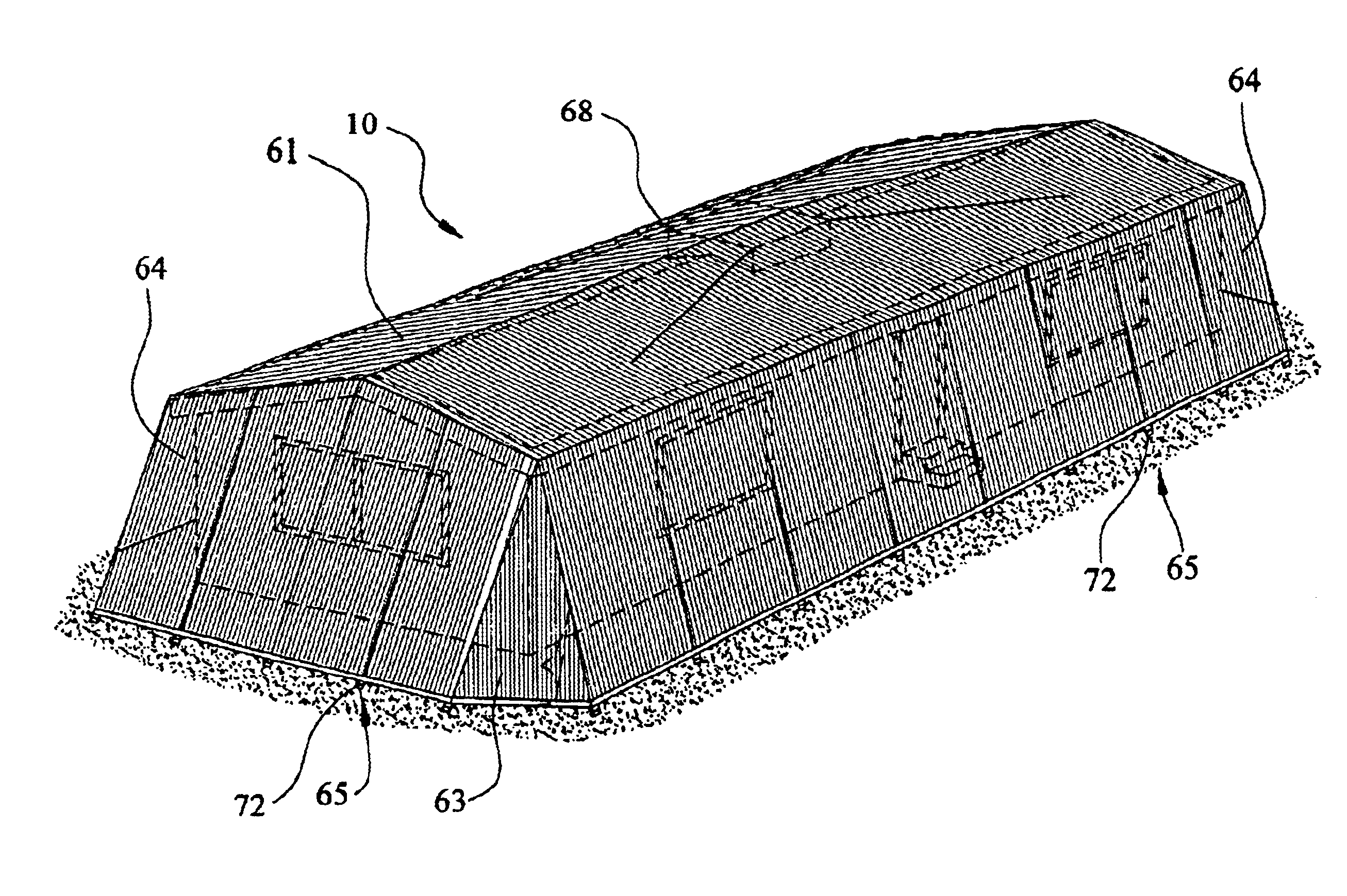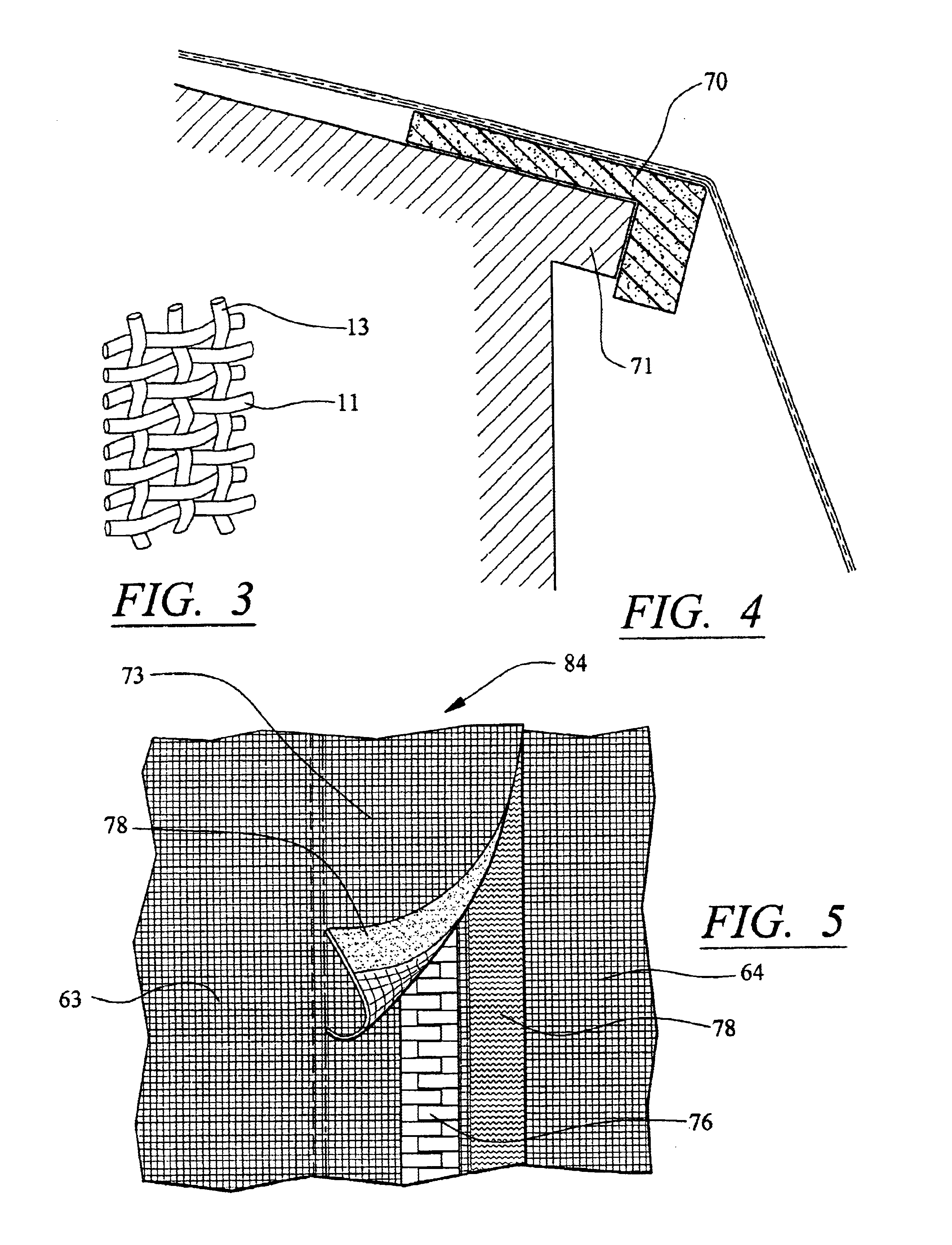Flexible wind abatement system
a technology of wind abatement system and flexible structure, which is applied in the direction of walls, roofs, ceilings, etc., can solve the problems of unsightly and difficult-to-mount reinforcing bars, loud, disturbing and often frightening bangs of inhabitants being protected, and achieves convenient use, easy protection, and light weight
- Summary
- Abstract
- Description
- Claims
- Application Information
AI Technical Summary
Benefits of technology
Problems solved by technology
Method used
Image
Examples
example
The preferred embodiment is used as an example to demonstrate this formula. The preferred embodiment is a polypropylene, woven monofilament geotextile. The individual filaments are woven into a basket weave network and calendered so that the filaments retain dimensional stability relative to each other. This geotextile is resistant to ultra violet degradation and to biological and chemical environments normally found in soils. This fabric is often used as the mat for outdoor trampolines and is intended to be very resistant to weathering. The fabric is known to stretch a maximum of 21% prior to failure and requires a force of 675 psi to fail.
1. The present test that was originally legislated by Dade County Florrida and may become the standard in the industry, requires the barrier to withstand a force of only 61.3 psi. Consequently the fabric meets and exceeds the first requirement of strength.1. The stretch factor calculation is (test load / maximum load×% stretch at maximum load=stret...
PUM
 Login to View More
Login to View More Abstract
Description
Claims
Application Information
 Login to View More
Login to View More - R&D
- Intellectual Property
- Life Sciences
- Materials
- Tech Scout
- Unparalleled Data Quality
- Higher Quality Content
- 60% Fewer Hallucinations
Browse by: Latest US Patents, China's latest patents, Technical Efficacy Thesaurus, Application Domain, Technology Topic, Popular Technical Reports.
© 2025 PatSnap. All rights reserved.Legal|Privacy policy|Modern Slavery Act Transparency Statement|Sitemap|About US| Contact US: help@patsnap.com



